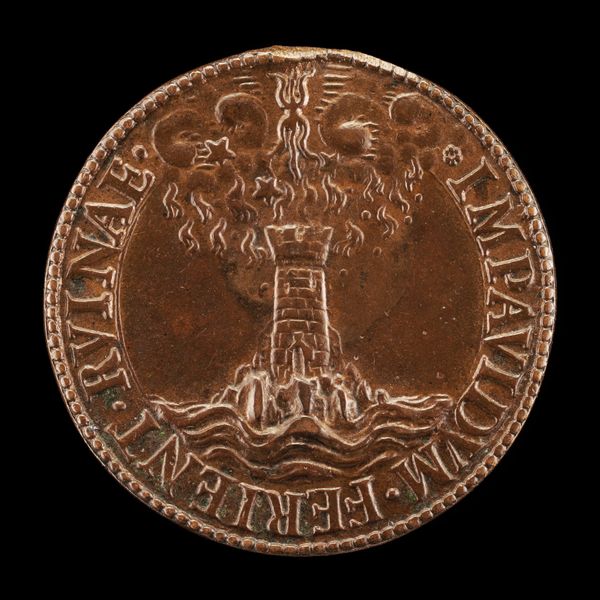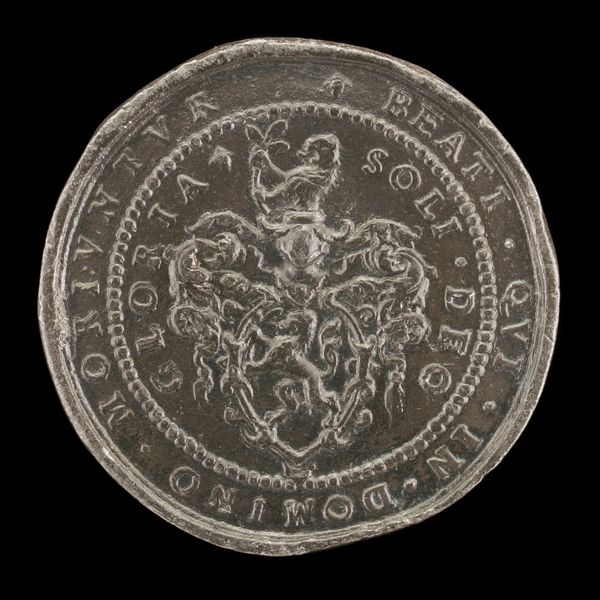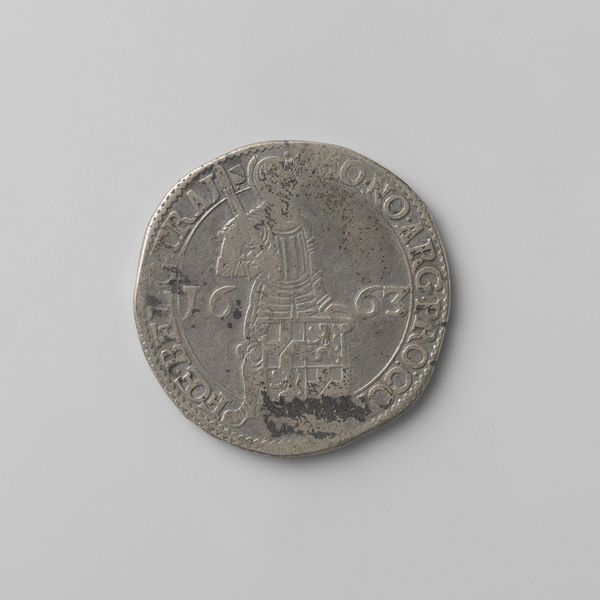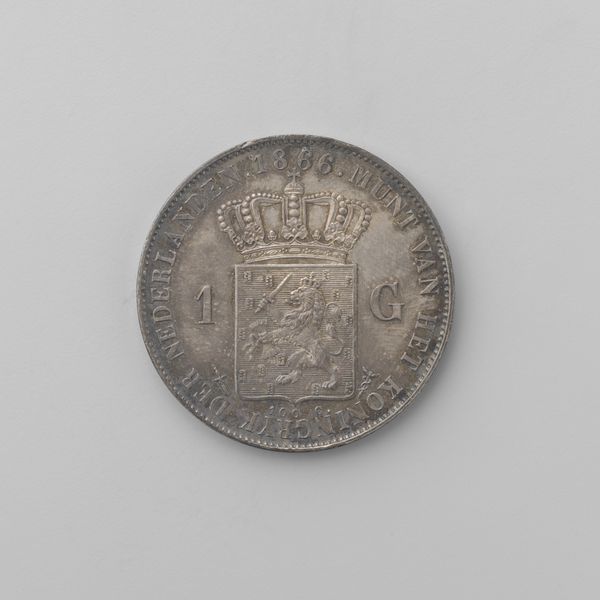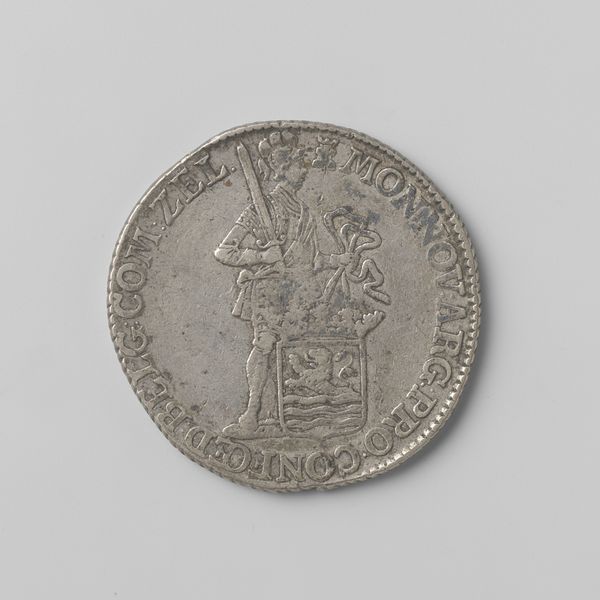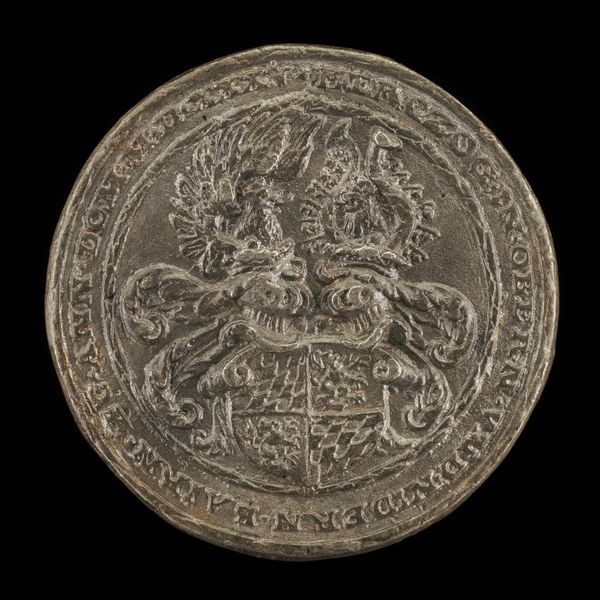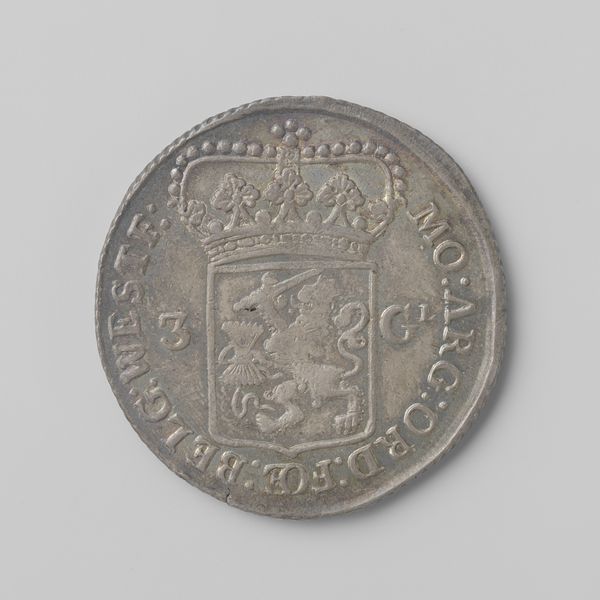![Table [reverse] by Jacques Jonghelinck](/_next/image?url=https%3A%2F%2Fd2w8kbdekdi1gv.cloudfront.net%2FeyJidWNrZXQiOiAiYXJ0ZXJhLWltYWdlcy1idWNrZXQiLCAia2V5IjogImFydHdvcmtzLzA1ZTJkYmRmLWY4MDgtNGUwOS04MzJjLTc1NWNlZDA2NTU1My8wNWUyZGJkZi1mODA4LTRlMDktODMyYy03NTVjZWQwNjU1NTNfZnVsbC5qcGciLCAiZWRpdHMiOiB7InJlc2l6ZSI6IHsid2lkdGgiOiAxOTIwLCAiaGVpZ2h0IjogMTkyMCwgImZpdCI6ICJpbnNpZGUifX19&w=3840&q=75)
metal, bronze, sculpture
#
medal
#
metal
#
sculpture
#
bronze
#
sculpture
Dimensions: overall (diameter): 2.44 cm (15/16 in.) gross weight: 7.42 gr (0.016 lb.) axis: 12:00
Copyright: National Gallery of Art: CC0 1.0
This small silver table was made by Jacques Jonghelinck sometime between 1530 and 1606. A close look reveals the subtle marks of its making, each line and curve a testament to the hand that shaped it. While the table seems ordinary at first glance, it’s a representation of something larger, produced through techniques that have deep roots in history. The process of die-striking, which likely formed the basis for the artwork, was a technique that required precision and control. It’s a process that speaks to the time and effort invested in its creation. But the artwork's significance extends beyond its material properties. It prompts us to consider the social and economic context in which it was made. What was the role of craftsmanship in society during this period? How did the production of objects like this table contribute to larger systems of labor and consumption? By focusing on materials, making, and context, we can gain a deeper appreciation for the full meaning of this tiny table.
Comments
No comments
Be the first to comment and join the conversation on the ultimate creative platform.
